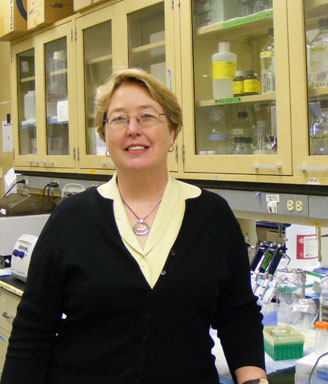X-ray Structure and Enzymatic Activity Profile of a Core Papain-like Protease of MERS Coronavirus with utility for structure-based drug design Journal Article
Local Library Link: Find It @ Loyola
| Authors: | Clasman, J. R.; Baez-Santos, Y. M.; Mettelman, R. C.; O'Brien, A; Baker, S. C.; Mesecar, A. D. |
| Article Title: | X-ray Structure and Enzymatic Activity Profile of a Core Papain-like Protease of MERS Coronavirus with utility for structure-based drug design |
| Abstract: | Ubiquitin-like domain 2 (Ubl2) is immediately adjacent to the N-terminus of the papain-like protease (PLpro) domain in coronavirus polyproteins, and it may play a critical role in protease regulation and stability as well as in viral infection. However, our recent cellular studies reveal that removing the Ubl2 domain from MERS PLpro has no effect on its ability to process the viral polyprotein or act as an interferon antagonist, which involves deubiquitinating and deISGylating cellular proteins. Here, we test the hypothesis that the Ubl2 domain is not required for the catalytic function of MERS PLpro in vitro. The X-ray structure of MERS PLpro-Ubl2 was determined to 1.9 A and compared to PLpro containing the N-terminal Ubl2 domain. While the structures were nearly identical, the PLpro-Ubl2 enzyme revealed the intact structure of the substrate-binding loop. Moreover, PLpro-Ubl2 catalysis against different substrates and a purported inhibitor revealed no differences in catalytic efficiency, substrate specificity, and inhibition. Further, no changes in thermal stability were observed between enzymes. We conclude that the catalytic core of MERS PLpro, i.e. without the Ubl2 domain, is sufficient for catalysis and stability in vitro with utility to evaluate potential inhibitors as a platform for structure-based drug design. |
| Journal Title: | Scientific reports |
| Volume: | 7 |
| ISSN: | 2045-2322; 2045-2322 |
| Publisher: | Unknown |
| Journal Place: | England |
| Date Published: | 2017 |
| Start Page: | 40292 |
| Language: | eng |
| DOI/URL: | |
| Notes: | LR: 20170220; GR: P30 CA023168/CA/NCI NIH HHS/United States; GR: R01 AI085089/AI/NIAID NIH HHS/United States; GR: T32 AI007508/AI/NIAID NIH HHS/United States; JID: 101563288; 2016/08/31 [received]; 2016/12/05 [accepted]; epublish |
LUC Authors
-
 47
47Baker
Related LUC Article
